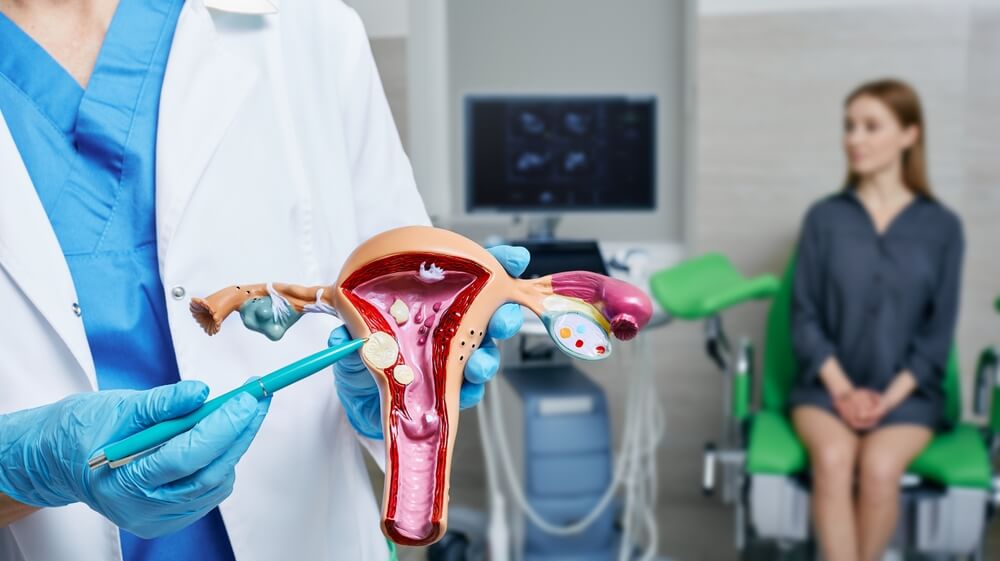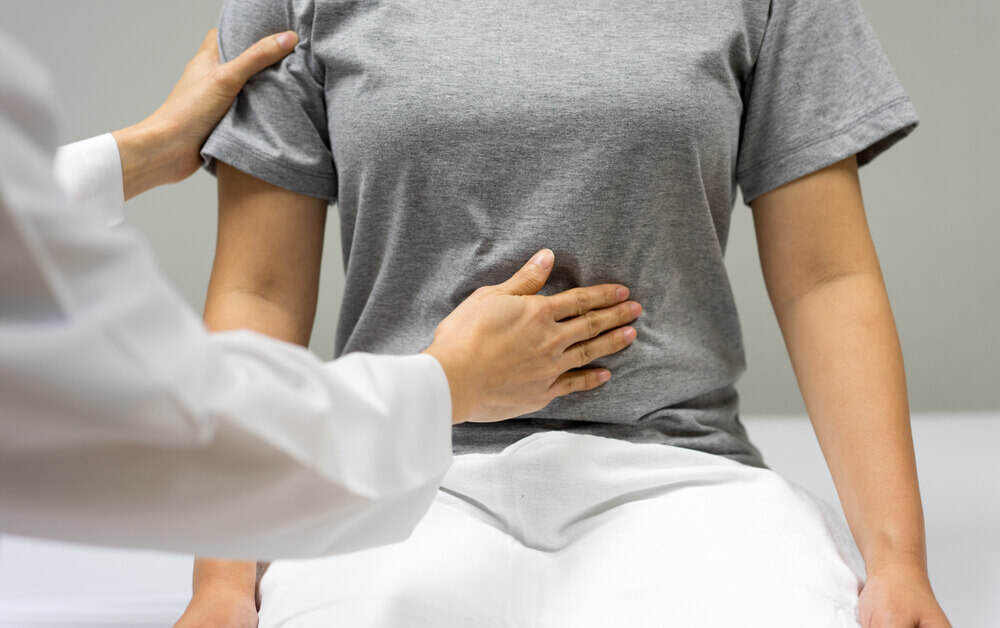UFE for Large Fibroids: Effectiveness, Risks, & Alternatives for Treatment

If you’re looking for options to address uterine pain and are considering Uterine Fibroid Embolization for large fibroids, it’s important to know the pros and cons of this treatment. You’ll also want to learn whether it’s right for you, or if a different treatment option would be a better choice. Here’s what to consider so you can make a wise decision and put your fibroid-related problems in the past.
What Defines Large Fibroids
Generally, large fibroids are those that are over 5 centimeters (approximately 2 inches) in diameter. This is roughly the size of an apple, and is sometimes also compared with a mango or even a small grapefruit. While many people assume the size of the fibroid is all that matters for symptoms, this is not necessarily the case. Some small fibroids cause a lot of problems, while larger ones may not be symptomatic.
For those who do have symptoms, though, the most common symptoms of large fibroids include:
- Prolonged, heavy periods
- Pelvic and lower back pain
- Bladder and bowel issues
- Bleeding in between periods
- Abdominal fullness or discomfort
If you have a lot of smaller fibroids, or a mix of smaller and larger ones, you may experience all of these symptoms.
Surgical Challenges in Treating Large Fibroids
There are a few significant challenges that come with hysterectomy and myomectomy in treating large fibroids and aren’t always seen with smaller ones. The bigger the fibroid, the bigger the challenge of treating it in many cases, but the placement of the fibroid can also be a concern. Generally, the biggest challenges are:
- Fibroid size
- Number of fibroids
- The specific location
- The impact on fertility
- Surgical risks (bleeding, infection, anesthesia, hemorrhaging, etc)
If the fibroid is near the cervix, for example, this can be harder to remove and will need a more delicate procedure than one that’s further up inside the uterus. Fibroids larger than 10 centimeters can also be more complicated to remove, since they can take up a lot of uterine space and require more effort to detach from the walls of the uterus.

Effectiveness of UFE for Large Fibroids
Fortunately, Uterine Fibroid Embolization is an excellent non-surgical treatment option for large or multiple fibroids. The success rate for this procedure is approximately 90-95%, with the majority of women seeing a dramatic improvement in their symptoms.
Fibroid Shrinkage for Symptom Relief
After UFE, a fibroid will shrink in a similar way to what it does after menopause. Studies show that, six months out from a UFE procedure, the average total uterine volume was down more than 40%. More importantly, because there is no longer blood flowing to the fibroid, it often feels much lighter and smaller to patients than the actual volume reduction. The reduction and improvement continued at 12 months and beyond, indicating that having a UFE generally offers both short-term and long-term improvement in symptoms and quality of life.
Potential Risks and Complications
Even minimally invasive treatments can have risks, and this is true of UFE as well. Before undergoing any medical procedure you should understand the potential risks and complications that can occur, so you can make an informed decision for your health. The biggest risks and potential complications of this particular procedure are:
- Infection
- Injury to the uterus
- Fibroid expulsion
- Blood clots
- Menstrual cycle stoppage or changes
- Uterine damage
- Infertility
Most of these issues are rare, and have treatment options if they do occur. The UFE procedure is considered safe and effective for the treatment of large fibroids. It’s still very important to talk with our medical professionals about the procedure, but if you’re a good candidate your risks are very minimal.
Alternative Treatments for Large Fibroids
If you’re not a good candidate for Uterine Fibroid Embolization – there are some other options that may work for you. These include minimally invasive options, hormonal treatments, and other forms of care.
Minimally Invasive Treatments
Along with UFE there are several minimally invasive fibroid treatments that provide care and relief. These include:
- Myomectomy
- Endometrial ablation
- Radiofrequency ablation
Every one of these treatments have varying degrees of success, but the size and placement of the fibroid, as well as other factors, can help you work with our doctor to make the best decision for your specific situation and needs.

Hormonal Options
Some people with fibroids aren’t candidates for surgical procedures for various reasons, or they might want to try other options first. If you’re looking for non-surgical ways to seek fibroid relief, you might want to consider:
- A progestin-releasing IUD
- Oral contraceptives
- Gonadotropin releasing hormone (GnRH) agonists
These aren’t right for everyone and you’ll want to carefully talk over your options before choosing a hormone-based treatment. It may have other effects on your body, and it’s not necessarily a long-term way to get the relief you’re looking for.
Other Opportunities for Relief
Taking NSAIDs during your period can help with pelvic pain and discomfort, and there are also medications that can help reduce the bleeding you’re experiencing. However, large fibroids may cause a lot of disruption to your life and it’s important that you don’t ignore getting help for them. Stronger treatment options such as UFE can restore your quality of life.
Get the Supportive Care You Need Today
Are you ready to get the help you need to effectively treat fibroids? Whether Uterine Fibroid Embolization for large fibroids is right for you or another type of procedure would meet your needs in a better way, we can provide you with information and options.
There’s no reason for you to be in pain any longer when you have the right care and treatment opportunities. Get in touch with us today at VIP Fibroid Center.
